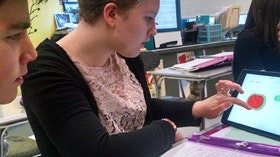Homepage
•
Learning Library
•
Blog
•
Turn passive learners into leaders by letting students teach!
Expand breadcrumbs
Expand breadcrumbs
- Learning Library
- Blog
- Turn passive learners into leaders by letting students teach!
- Homepage
- •
- Learning Library
- •
- Blog
- •
- Turn passive learners into leaders by letting students teach!
Turn passive learners into leaders by letting students teach!
By Rachelle Dene Poth
July 19, 2017








